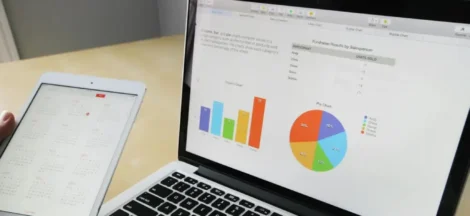Since it encourages discipline, helps traders follow their trading plan, and boosts confidence, using a trading checklist is vital in the trading process. Keeping a trading checklist gives traders a set of questions they must respond to before making trades.
A trading checklist should not be confused with a trading plan. The trading plan covers the overall picture, such as the market you are trading in and the analytical strategy you decide to use. The trading checklist focuses on each specific trade and the prerequisites that must be satisfied for the trade to be made.
Your Definite Trading Checklist
Is the market trending or ranging?
Seeing a strong trend and trading in its direction might potentially result in higher probability trades, as experienced traders are aware. Trending markets are said to be able to save traders from losing trades. As can be seen here, even if a trader launched a short trade after the trend was firmly established, the trend would still provide more pip opportunities to the downside than to the upside. If “trend trading” is a component of their trading plan, traders should consider if the market is showing symptoms of a strong trend.
Ranging markets tend to see a bounce between support and resistance, which causes the price to trade inside a channel. Some markets, such as the Asian trading session, tend to trade in ranges. For traders focusing on range trading, oscillating indicators (RSI, CCI, and Stochastic) may be helpful.
Is there any significant level of support or resistance nearby?
For a variety of reasons, price action tends to respect particular price levels, and being able to locate these levels is essential. If a price has fallen below a crucial level of support, traders do not want to be holding a short position just to see it bounce back higher.
The same is true when price hits a crucial point of lower resistance and typically drops short immediately after. As a sign that the market could start to trend, trend traders typically watch for persistent breaks of these levels. Conversely, range traders will watch for price to bounce between support and resistance for extended periods.
Does an indicator confirm the trade?
Traders can confirm high-probability trades with the use of indicators. Traders will have one or two technical/fundamental indicators that support their trading strategy, depending on their trading plan and indicators. Avoid the pitfall of making the analysis too complicated by using several indicators on a single chart. Make the analysis neat, straightforward, and quick to scan.
What is the risk-to-reward ratio?
The number of pips that traders is willing risk to hit the target is known as the risk-to-reward ratio. Traders with a positive risk-reward ratio were nearly three times more likely to be profitable than those who do not, according to our Traits of Successful Traders research, which analysed over 30 million actual trades. A 1:2 ratio, for example, indicates that if the trade works out, the trader will lose half of what they stand to earn.
How much capital am I risking?
This is a crucial question for traders to pose. While pursuing “guaranteed things,” traders frequently blow up their funds by using the greatest amount of leverage. Limiting the leverage used on all trades to 10 to one or fewer is one strategy to prevent this. Other useful hints include setting stops on all trades and ensuring that the total amount risked is less than 5% of the account balance.
Are there any significant economic releases that can impact the trade?
The “ideal” trade might be invalidated by unexpected market news. Traders can plan for economic releases like NFP, CPI, PMI, and GDP releases, even if it is nearly impossible to predict things like terrorist attacks, natural catastrophes, or systemic failures in the financial markets.
Am i following the trading plan?
If the information as mentioned earlier does not relate to the trading plan, it is of very little utility. Deviating from the trading plan will provide inconsistent outcomes and just impede the trading process. Follow the trading plan and avoid placing trades until the trading checklist has been completed and the trade may be executed.
A trading plan should include the times you are scheduled to look for trading opportunities. Know what time different markets open and close is critical. Read this article to learn more.
Final Words
The above are some of the pointers that we thought were significant and should be kicked before entering any trade. But, having a checklist does not guarantee that all trades will turn out to be winning trades automatically. Nonetheless, traders should stick to their trading plan, trade consistently, and avoid impulsive or reckless trades. We really hope that you found this blog to be informative to the max and that you will apply the material to its fullest potential in the practical world. Spreading this blog to your friends and family will assist us in our mission to promote financial literacy.





 Tips to Care for Your Dog as a Busy Dog Owner
Tips to Care for Your Dog as a Busy Dog Owner